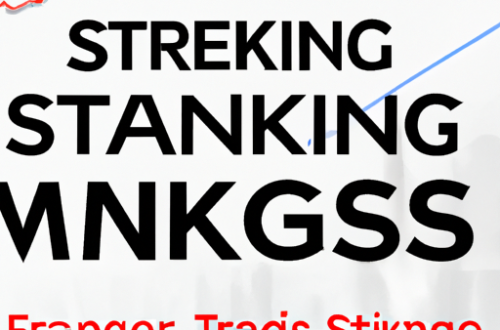Understanding Stop Loss in Forex: The Beginner’s Essential Tool
Navigating the forex market as a new trader can feel overwhelming. One critical concept to master early on is the stop loss—a risk management tool that helps you protect your trading capital. In this guide, you’ll learn how to set stop loss in forex trades for beginners, the different types of stop loss orders, and practical strategies to use them effectively.
A stop loss order automatically closes your position at a predetermined price, limiting your potential losses if the market moves against you. Think of it as your safety net, ensuring you never lose more than you’re comfortable with.
Table of Contents
- What is Stop Loss in Forex?
- Why Should Beginners Use Stop Loss?
- Types of Stop Loss Orders
- How to Set Stop Loss: Step-by-Step Guide
- Effective Stop Loss Strategies for New Traders
- Common Mistakes to Avoid
- Final Tips for Setting a Stop Loss in Forex
What is Stop Loss in Forex?
A stop loss is a pre-set order placed with your broker to sell (or buy, in case of short positions) a currency pair when it reaches a specific price. The primary goal is to limit your loss on a trade. For example, if you buy EUR/USD at 1.1200 and set a stop loss at 1.1150, your trade will automatically close if the price drops to 1.1150—capping your potential loss at 50 pips.
Why Should Beginners Use Stop Loss?
- Risk Management: Stop loss helps you control losses and protect your trading account from large drawdowns.
- Emotional Discipline: It prevents emotional decision-making and panic selling.
- Automated Exit: You don’t need to monitor the market 24/7; your stop loss handles the exit for you.
Using a stop loss is considered one of the most important forex trading risk management techniques, especially for beginners.
Types of Stop Loss Orders in Forex
There are several ways to set a stop loss in forex trades. Understanding these options helps you choose the most suitable one for your trading style:
- Standard Stop Loss: A simple order set at a fixed price level. Your position closes automatically once this level is reached.
- Trailing Stop Loss: This order moves with the market price, locking in profits as the trade moves in your favor while still protecting you from downside risks.
- Guaranteed Stop Loss: Offered by some brokers, this ensures your trade is closed at the exact stop loss price, regardless of market volatility (often for a small fee).
How to Set Stop Loss in Forex Trades: Step-by-Step for Beginners
- Choose Your Trade Entry Point: Identify where you’ll enter the market based on your analysis.
- Determine Your Maximum Risk: Decide how much of your trading account you’re willing to risk (usually 1-2% per trade for beginners).
- Locate Logical Stop Loss Level: Use recent support and resistance levels, swing highs/lows, or a set pip distance to place your stop.
- Enter Stop Loss on Platform: Input your stop loss order when you place your trade. Most forex trading platforms allow you to set this easily.
- Review and Adjust: Monitor your trade and adjust your stop loss if needed, especially if using a trailing stop.
Example: If you buy GBP/USD at 1.3000, identify the last swing low (say, 1.2970) and set your stop loss just below it (e.g., at 1.2965).
Effective Stop Loss Strategies for New Forex Traders
- Percentage-Based Stop Loss: Risk a small percentage of your trading capital on each trade (e.g., 1%). If you have a $1,000 account, risk only $10 per trade.
- ATR-Based Stop Loss: Use the Average True Range (ATR) indicator to set your stop loss a certain multiple of the ATR away from your entry.
- Support/Resistance Placement: Place stop loss just below support (for long trades) or above resistance (for short trades).
Many successful traders combine these methods for a more robust risk management plan. Always tailor your approach to your trading strategy and market conditions.
Common Mistakes Beginners Make When Setting Stop Loss
- Setting Stops Too Tight: Placing your stop loss too close to the entry can result in getting stopped out by normal market fluctuations.
- Ignoring Volatility: Not accounting for market volatility can lead to premature exits.
- Moving Stop Losses Further: Widening your stop loss after entering a trade increases your risk and can lead to larger losses.
- Not Using a Stop Loss: Trading without a stop loss exposes your account to unlimited risk.
Final Tips: Mastering Stop Loss for Consistent Forex Trading Success
Learning how to set stop loss in forex trades for beginners is crucial for long-term trading success. Here are some final tips:
- Always use a stop loss on every trade, no matter how confident you are.
- Adjust your stop loss as your trade moves in your favor to lock in profits.
- Practice on a demo account to get comfortable with different stop loss strategies before trading live.
- Keep emotions in check and stick to your trading plan.
Remember, using a stop loss is not just about preventing losses—it’s a key component of a disciplined forex trading strategy. By mastering this skill, you’ll protect your capital and build confidence as you develop as a trader.
Frequently Asked Questions About Stop Loss in Forex
- What is the best stop loss method for beginners?
- Most beginners use percentage-based or support/resistance-based stop loss methods for simplicity and effectiveness.
- Can I change my stop loss after placing a trade?
- Yes, most trading platforms allow you to modify your stop loss order at any time.
- Is trailing stop loss better than fixed stop loss?
- Trailing stop loss helps lock in profits as the trade moves favorably, but both have their uses depending on your trading style.
Conclusion
Setting an effective stop loss is one of the foundational skills every forex trader must learn. It enables you to manage risk, protect your account, and trade with confidence. Start practicing today, and make stop loss orders an essential part of your trading plan!





